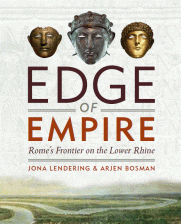The irreverent British comedy show Spitting Image once aired an episode in which Ronald Reagan was unable to remember the name of a new Soviet leader. Fortunately, one of his assistants came up with a plan: a set of pictures, each representing a syllable. The first one was a mouth/throat, the second one a sheep, the third a cook: gorge-bah-chef, “Gorbachev”. However, when Reagan had to read the rebus aloud, he said “Mister Mouth-Sheep-Toque”, adding something like “Mouth Sheep Toque, Mao Zedong, wasn’t he Chinese or something?”
This illustrates a well-known art historical problem: how to interpret a symbol or a drawing? You can go wrong, terribly. An example from ancient history is the little graffito from the Marble Street in Ephesus, which shows a crowned lady, a heart, and a foot. It is often said that this is a road sign, indicating that there was a brothel in the neighborhood.
Last week, I heard the story repeated by a tour guide who took the heart to be a wallet with coins, “no money, no honey”. This is a nice story and the people clearly liked it, and it must be admitted that the ancients did not depict the heart as we do, so it may indeed be a wallet.
However, the problem is that we have no clue whether this interpretation is correct. One argument was that there is a building in the neighborhood that has been identified as a house of pleasure, but this is based on an inscription that refers to a paidiskeion, which can mean brothel, but can also mean latrine – and there is indeed a latrine over there. So, this argument turns out to be invalid. What remains is the picture itself, which can represent anything, although the closest iconographic parallel to the crowned lady is Tyche, who is always shown with a mural crown. If we accept that the woman is indeed the goddess of fortune, we can understand the wallet, but the foot remains a mystery.
Personally, I think that the interpretation of our graffito as an advertisement of a brothel, tells more about modern archaeologists than about the past. There used to be a tendency to regard the ancient Greeks and Romans as sexually less restricted than we are. Every barmaid, every shopkeeper, every woman not working at home was immediately interpreted as a prostitute. I was reminded of a cartoon, called “He had seen enough with the Rorschach test”, which showed a man leaving the psychologist’s office, slamming the door behind him, saying “What dirty a old man, with those filthy pictures!”


 Subscribe to feed
Subscribe to feed